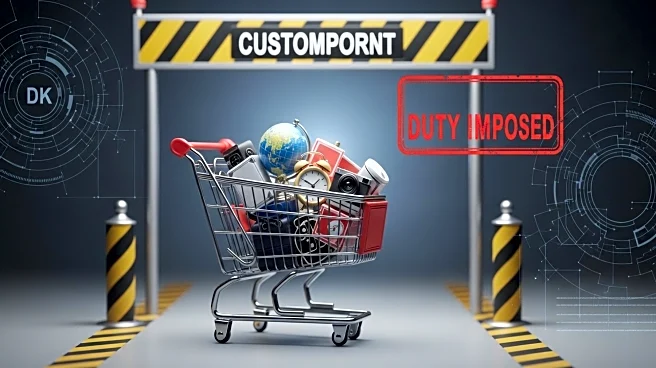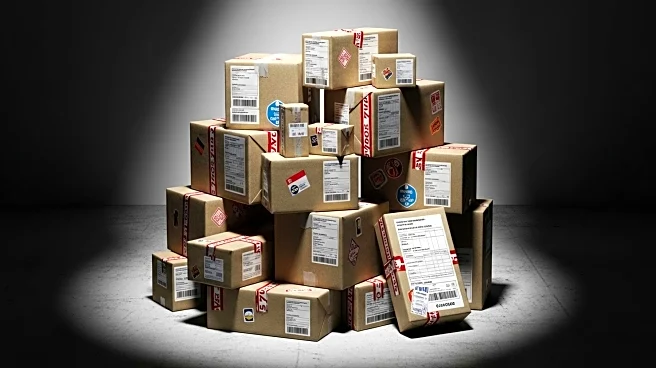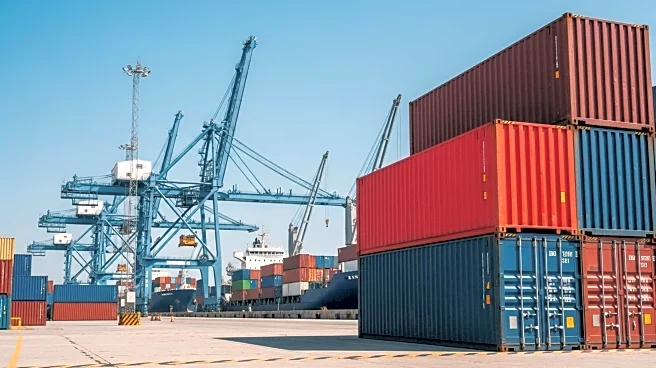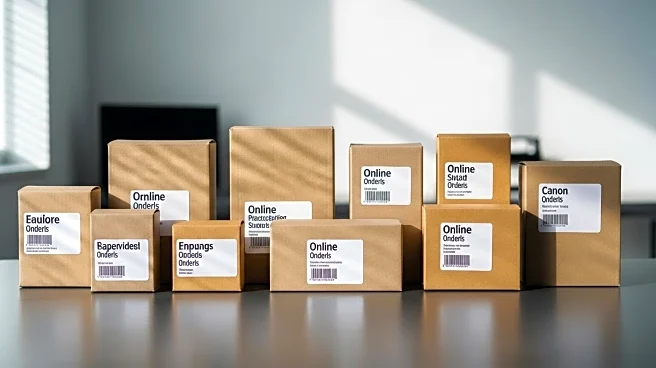What is the story about?
What's Happening?
Effective August 29, the U.S. has removed the de minimis exemption for imports valued under $800, subjecting them to tariffs. This decision, announced in a White House executive order, aims to close a loophole that allowed the evasion of tariffs and the entry of unsafe products into the U.S. The exemption's removal affects shipments from China and Hong Kong, which previously benefited from duty-free entry. The volume of de minimis shipments has surged from 134 million in 2015 to over 1.36 billion in 2024, leading to significant lost revenue for the U.S. The change impacts e-commerce platforms like Shein and Temu, which relied on the exemption to send goods directly to U.S. consumers.
Why It's Important?
The removal of the de minimis exemption marks a significant shift in U.S. trade policy, affecting businesses and consumers alike. Companies will face increased tariffs, handling fees, and complex customs protocols, impacting operational agility. Consumers may experience higher costs and longer delivery times for online purchases. The competitive landscape may favor sellers who can absorb or communicate these new burdens effectively. The change is expected to reshape global trade routes, with air cargo volumes between China and the U.S. already declining due to reciprocal tariffs. Businesses must adapt to new compliance requirements, potentially leading to increased automation and agility.
What's Next?
As the exemption is removed, businesses will need to navigate new customs entry requirements and tariffs. Non-postal shipments will require entry filings and bonds, while international postal services will impose duties based on the shipment's country of origin. The change may lead to a reallocation of aircraft from the China-U.S. market to other regions, as cargo airlines adjust to tariff-induced trade flow changes. Companies will need to strategize to remain competitive, potentially exploring alternative revenue streams or adjusting supply chains to mitigate the impact of increased costs.
AI Generated Content
Do you find this article useful?















